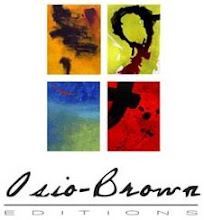Thanks to advanced printer technology and the search for new business opportunities, a lot of businesses are now claiming to produce giclée prints. Photographers, prepress shops, graphics printers and the like are dipping into the giclée market with, unfortunately, mixed results. The art of reproducing any fine art work is a highly skilled technique and should only be trusted to those who truly understand the science of color. It’s a multi-step process and any weaknesses in the chain will affect the quality of the end result.
It all starts with image capture. When artists are looking for a fine art printmaker, they should never underestimate the importance of the camera. This is where many giclée wannabes first go wrong. The beauty in fine art is in the details, those delicate nuances, the swirls of mixed colors, that give paintings a depth of texture. You cannot recreate that through photography without a scanning back camera system.
The Phase One FX+ Scanning Back Camera we use at Osio-Brown Editions has 384 megapixels and a unique trilinear array sensor, giving it a distinct advantage over single shot flash digital cameras. The problem with a planer array sensor used in single shot cameras is that it lacks the resolution and color fidelity necessary for a full size print. The difference in quality is so remarkable, even an appraiser can be fooled without his microscope.
The downside of the scanning back system is the cost. At around $28,000, many studios simply are not willing to invest in the best equipment possible. Cheaper alternatives are out there, but when it comes to the finished quality of your fine art prints there is simply no better choice. Remember, “A Great Giclée Print Begins With A Great Digital Image.”
Adam Brown
